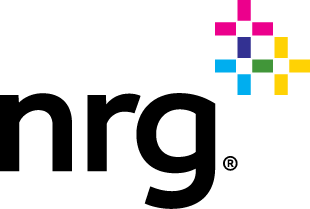How IoT Is Transforming the Energy Industry

NRG Energy Insights | Innovation
As the cost of sensors, devices, edge networks, machine learning, and analytics decreases, the impact of the Internet of Things (IoT) is creating a new industrial paradigm that impacts every industry, energy included. Energy has been evolving in terms of generation and distribution, and the IoT stands to be the most transformational aspect of this brave new world. Here’s how we expect it to affect corporate energy users in the next decade.
Access to insight
Access to actionable insight is what drives the greatest impact. While big data provides masses of information, the ability to understand what that data means is key. Digitization, smart meters and cheap sensors, combined with the sharing and analysis of data, means instant awareness of waste— and how to avoid it. These insights enable real-time energy management, which leads to cost cutting, improvements in performance, and maximizing operations, like field service teams and transport. With data and smart analysis, clients are able to determine potential cost savings and dig into energy efficiencies that may have gone unnoticed.
One example of this is utility-driven demand response (DR) programs, that use smart switches to power down high-energy consumption in factories during periods of peak demand. It supports the implementation of storage on-site, and even on-site power generation, to optimize business activity. By providing access to power savings, storage or generation, companies can access a new revenue source while optimizing their operations.
At NRG, we’re helping lead the way forward for demand response programs and have already partnered with over 6,500 facilities (of all types and sizes) to determine and implement the right demand response plan for their specific business needs. We understand energy in general and each customer’s energy usage specifically. We take that understanding and use it to help them execute and benefit from the daily operation of a DR program.
Transparency
One of the likely challenges is an increasing public expectation of transparency for energy usage and sources, as well as emissions profile. Our Active Management Platform (AMP) not only provides an intuitive management platform but includes the provision of all the metering equipment needed for demand response.
Our system allows you to predict your monthly costs, so you’ll never be surprised when your bill arrives. Not only that, but the AMP can decrease the risk of power failures and electrical surges during hours of high demand by predicting system peaks and enabling our customers to seize curtailment opportunities at those times. The dashboard allows customers to track energy usage in real time which enables cost control and also helps reduce environmental impact, tracking energy patterns and detecting anomalies.
For some operators this may not be considered a major concern today, but it’s important to keep in mind the global nature of today’s supply chains. It is not simply a question of whether heavy emissions could negatively affect a company’s reputation—we know it’s going to be a concern for both regulatory agencies and end consumers. As data on such information becomes more accessible, it seems likely that any company within a global supply chain is at risk of demand for reductions from their end client. For food and drink giants, for example, up to 80% of their emissions footprint lies outside their immediate control. This will be important for companies operating within Europe or China, but many U.S. companies have also requested action on emissions from their suppliers, including General Mills and Coca Cola and, at least initially, that means the provision of data.
Transformation of the energy markets
IoT connectivity can provide a real-time view of energy as it is generated and consumed, not just at a corporate level but at a utility and soon, perhaps, a grid level. If a smart grid is deployed and generators link to it, the need for large-scale, centralized generators diminishes. That means there will be a fundamental transformation in the way energy will be generated, distributed, consumed, and stored.
We expect to see increasing energy efficiency and management, greater demand for virtual power plants, load shifting and using storage to consume high levels of renewables at times of peak production and the integration of wind and solar into buildings to maximize returns. Our Distributed Energy Resource Management System (DERMS) is a solution with “layers” of communication management, between markets and sites, and between sites and devices/load. The system itself is hardware agnostic, cloud-based, and secure. It provides a centralized fleet management system with ability to scale for management of 10,000s of distributed resources. And best of all, it connects distributed assets with access to physical energy markets.
Security
One hurdle for such a transition in the energy markets has always been the ability to trade securely. With blockchain-enabled platforms now facilitating peer-to-peer trading for the individual at scale, that hurdle may be out of the way. While this scenario isn’t yet mainstream it is being explored across the financial and trading sectors. And regardless of whether the technology is embraced by the mainstream, corporate clients stand to benefit from secure, decentralized ledgers.
As more devices connect, companies will face increased fragmentation, interoperability, and security challenges but opportunities are available for real-time energy analysis, trade, and infrastructure management. Done right, the IoT will improve security, reliability, and efficiency, and investment into this arena. We’re confident that data informing power consumption, efficiency, demand, and production at the facility-level will ensure none of us get left in the dark in the new age of energy.

